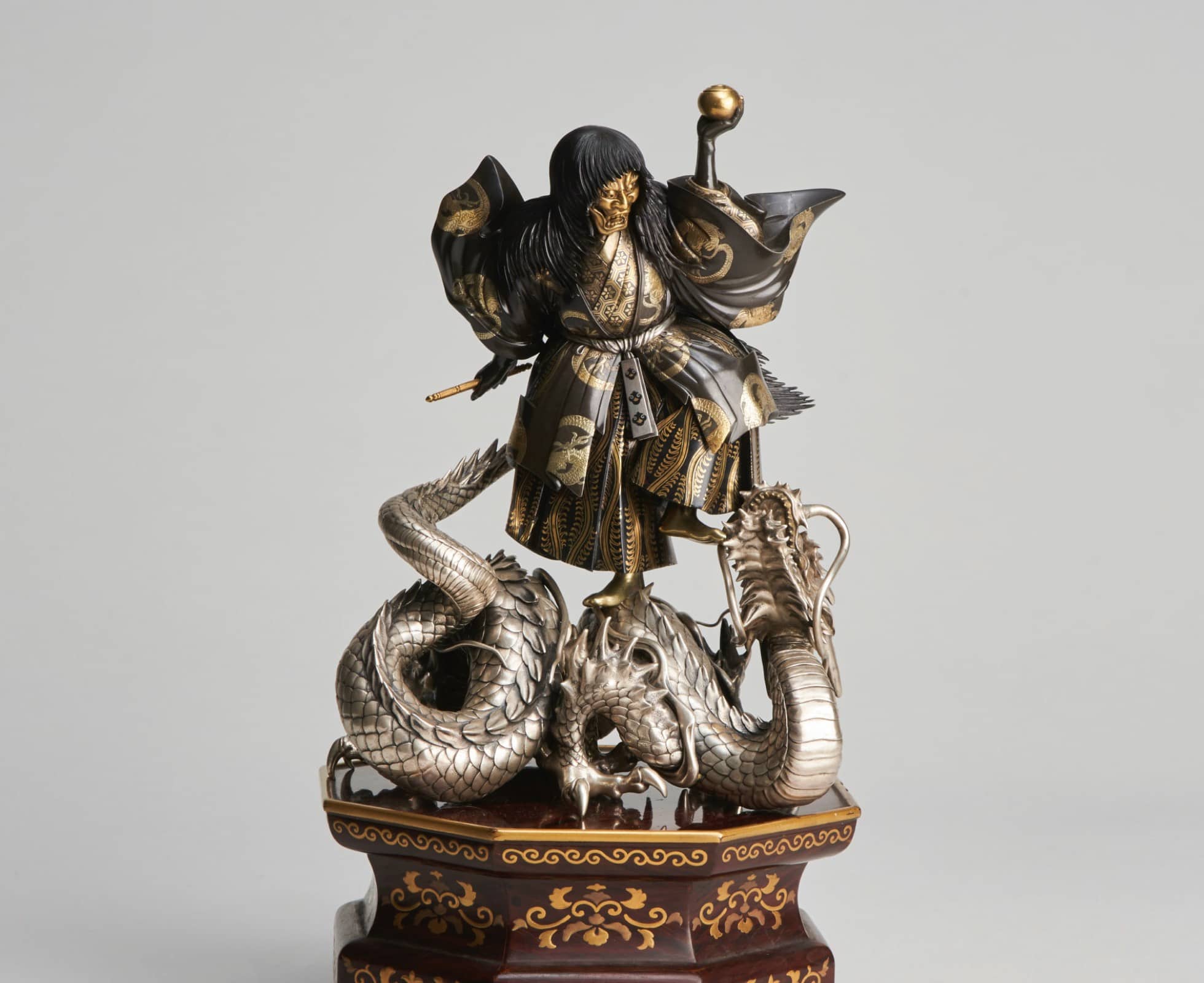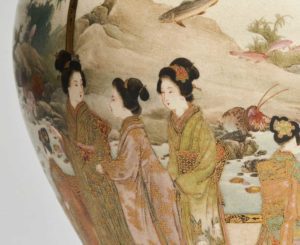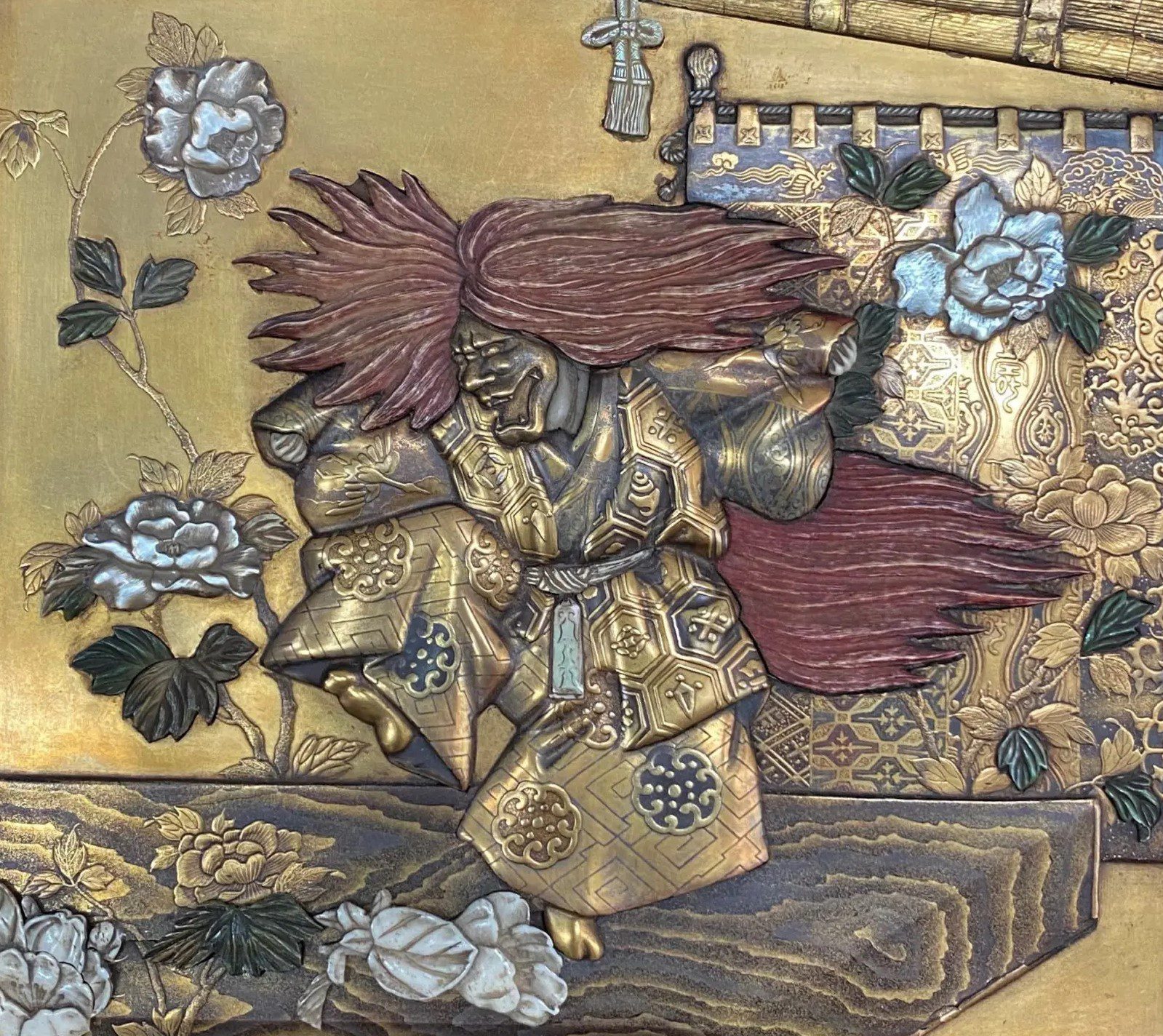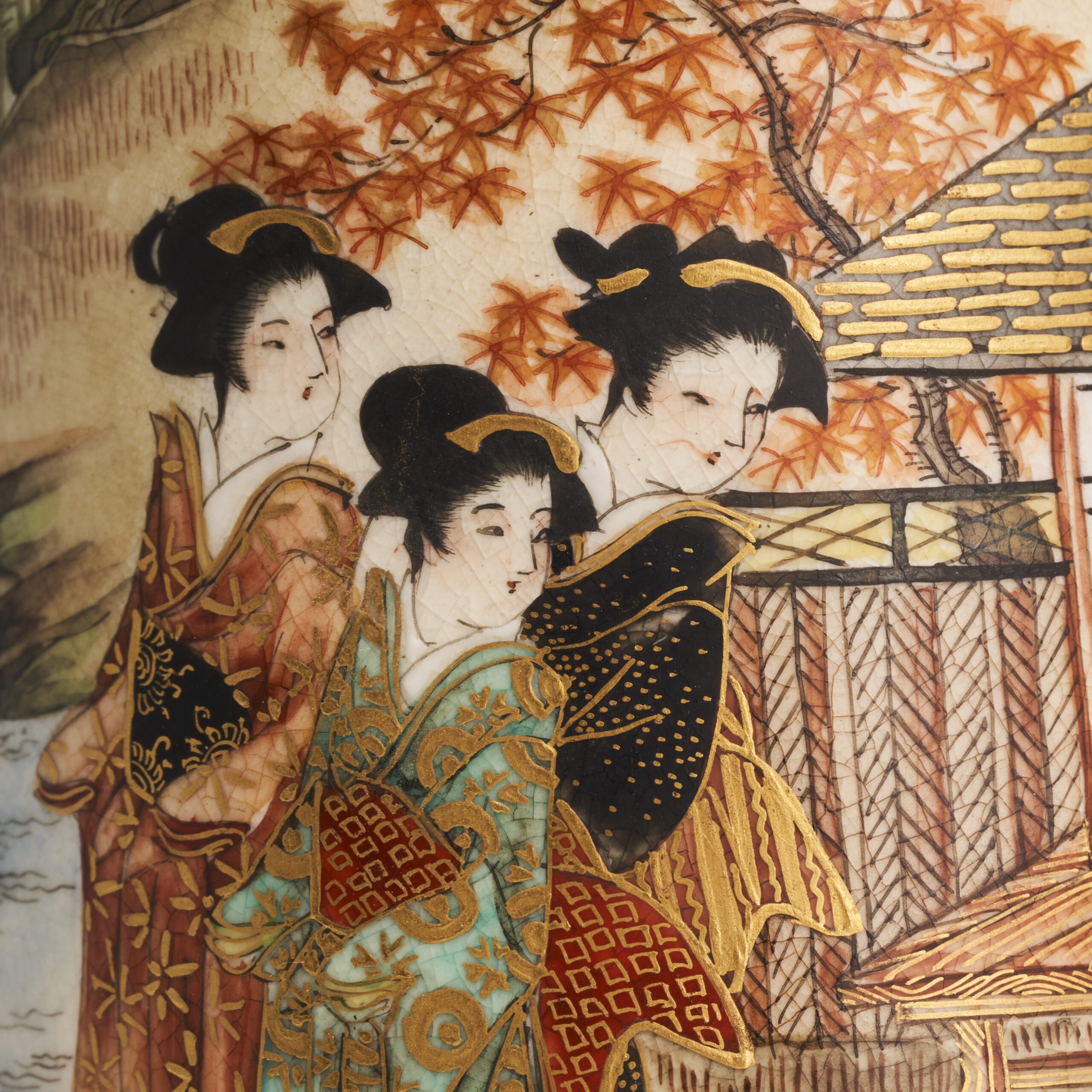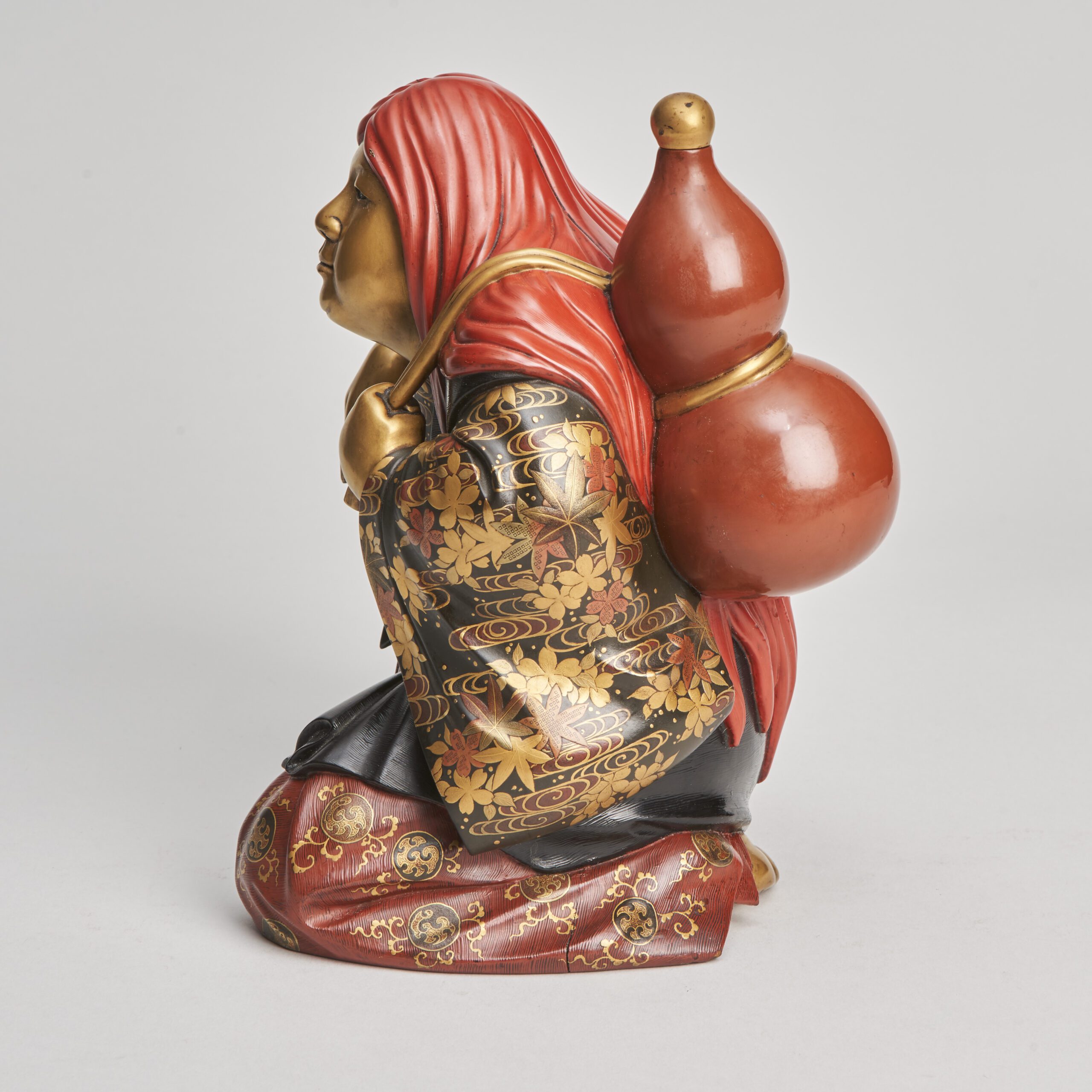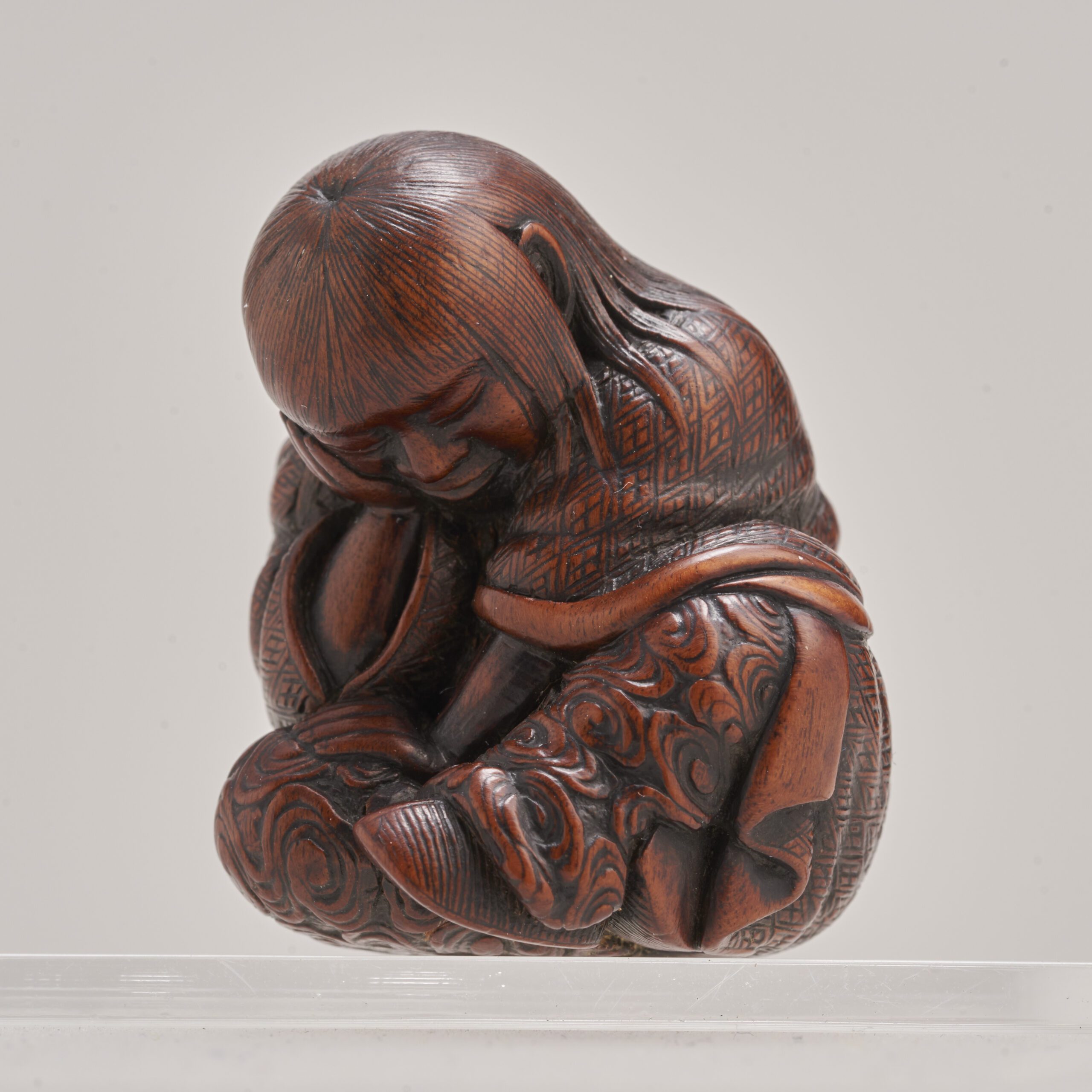As many of us patiently approach the end of “Dry January”, we thought it would be a nice idea to introduce one of our favourite characters from Japanese legend, The Shōjō.
(As always with our short-stories, you can click on any of the images below to take a closer look at the item displayed.)
The Shōjō is a mythological Japanese Spirit, identifiable by their vibrant red hair and their love of alcohol. Despite mostly depicted as feminine in appearance, Shōjō are actually genderless and are therefore referred to as “they.” Legend has it that Shōjō reside near to the sea and as such, they are often associated with Sailors.
A lacquered wood depiction of Shojo sitting atop a giant Sake jar.
Shōjō are usually jovial, friendly characters who enjoy dancing. They can understand human language and even communicate themselves using a few words. They are generally peaceful spirits who revel in silly drunken behaviour, singing and generally enjoying life. Despite their jolly behaviour, it is thought that they are very wise and often show kindness towards human beings.
As with many Japanese characters, creatures, Spirits and Deities, The Shōjō have their origins in Chinese legend. The Chinese name is Xing-Xing or Sheng Sheng.
A dancing Shōjō portrayed on the panel of a fine Japanese, Meiji-era Shodana
In Japan, the word “Shōjō” has developed many different meanings over time. Shōjō can mean “School girl” with “Shōjō Managa” being a popular genre of romantic comic book aimed at teenage girls. With the diacritics removed, “Shojo” is also the word used for a female virgin. The famous red Acer trees often depicted in Japanese art are known as “Shojo Namuma”
Noble ladies standing under the boughs of a vivid Acer tree
“Shojo” and the Chinese equivalent “Xing-Xing” is also used to describe the Orangutan in both Chinese and Japanese language. Perhaps inspired by the bright red hair and often comical appearance.
In Japanes mythology, Shōjō take many different forms. They are sometimes depicted as a feminine character with long red hair and elegant robes. Often this depiction is seen hiding among Sake bottles or is asleep after perhaps partaking in one too many libations.

A box-wood Netuske of a sleepy Shōjō
In ancient Japan, legend says that red dye was made from the hair of a Shōjō. It is said that a bottle of Sake was used to lure the friendly spirit and then once they were intoxicated and sleepy, their hair would be stolen to produce the dye.
It is said that Shōjō are excellent brewers of alcohol and that they distil a very fine “Brine Wine” made from the seawater found near their coastal home. The wine is believed to have magical qualities. If a good, kind, decent person drinks it, it will be delicious but if a bad person drinks the wine, then they will taste poison and they may even perish.
Another commonly depicted form of Shōjō is that of a hairy, apelike creature with long messy red fur and a red complexion. This is very likely where the Orangutan name came from, or perhaps a sighting of an Orangutan was the start of the Shōjō myth.
A lacquered-wood Okimono of a Shōjō. Notice the double gourd vessel on their back, full to the brim with wine no doubt.
One of our favourite Shōjō tales is a Noh play that tells of a humble man who sold his home-brewed Sake at the local market.
A Shōjō disguised as a human took a liking to the wine and purchased a huge quantity to drink there and then. They somehow drank it all without ever becoming red-faced. The Shōjō returned on a number of occasions, always enjoying the mans wine.
After a while, the two became friends and the Shōjō finally revealed its true identity to the humble merchant. The kind spirit invited the man to its seaside home and the two partied and drank together enjoying the most marvellous time.
Finally the once-poor Sake seller returned home to find that his wine vat would always magically fill itself. A gift from his drinking buddy, the Shōjō.
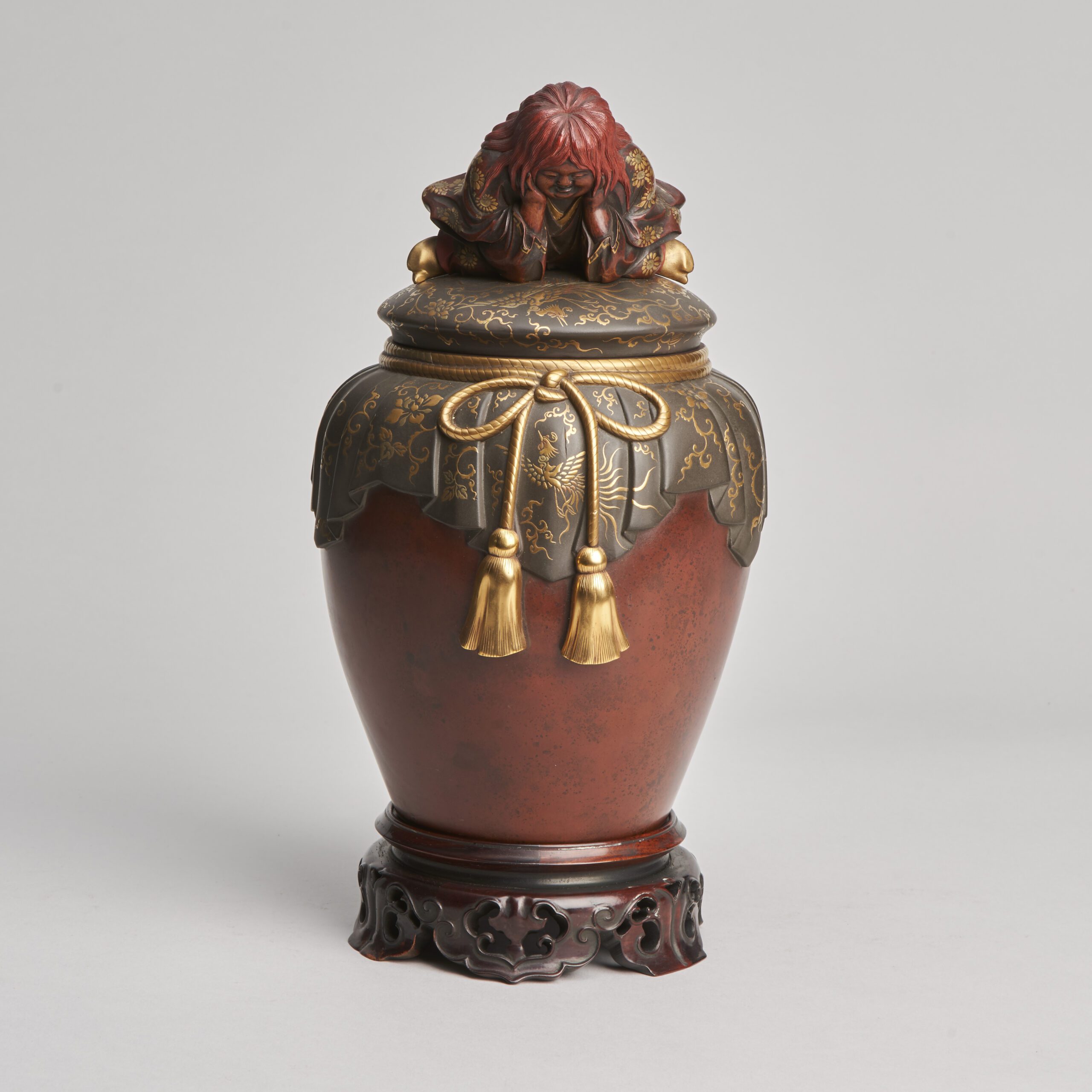
Another look at this covered jar showing a Shōjō guarding a covered jar of Sake.
We hope you have enjoyed reading this story. For more articles inspired by our collection of Chinese and Japanese Fine Art and Antiques, visit our News and Blog page by clicking here.

